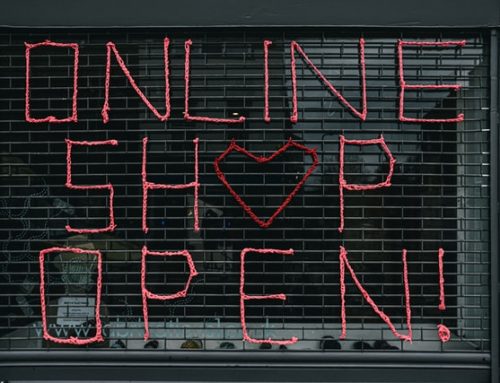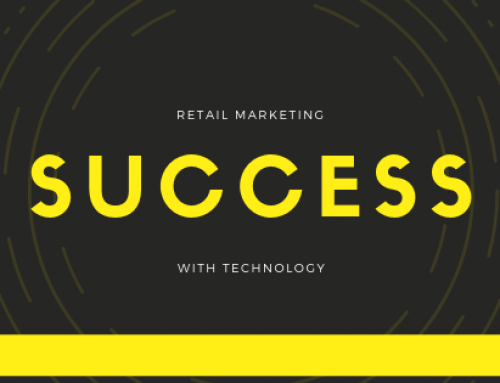In our Part I post on Loyalty programs we looked at the need for them, their benefits and risks and we began to dive into what it takes for these programs to be successful. (If you haven’t read that post yet, it might be best to do so before continuing on here).
In the “steps to success” part of the post, we firstly suggested that, at a bare minimum, you:
- Set some goals
- Profile your key customers
- Identify what it is that your key customers like about your products and your shopping experience
- Pick the type of loyalty program you want
- Track participation in it.
It’s here where we pick up the discussion, diving a bit deeper into what else is required in the development, launch, communication, and ongoing maintenance of your loyalty program to ensure its success and longevity.
Loyalty Program Development

You’re convinced you need a loyalty program and you even have an idea about what you hope that it accomplished, this is where “the rubber meets the road” and you can develop your program to meet your needs.
You will need to work out the finer details of your program in this phase and there are a few considerations to keep in mind as you do.
Rules: It should include clear, straightforward rules that everyone understands. Staff and customers alike need to understand the details of how it works and employees need to be able to easily articulate these to customers.
A simple program well run is far more beneficial than a complicated one that confuses and complicates what should be a positive experience.
Reward Currency: How will you reward your customers for their participation in your loyalty program? Are you going to use reward points, gift cards, free product, coupons printed onto receipts? Or are you going to email them special offers, e-coupons, or special invitations to sales in advance?

Think about your program goals and your customer and keep both in mind here. You want a rewards that is meaningful to the customer and administered easily and that helps you to meet your goals, all at the same time.
Consider your rewards carefully. Strike a balance between making your rewards attainable for customers (but not too attainable) and creating a program that’s worthwhile for your business (such as requiring customers to spend a certain amount of money or make a certain number of visits).
Be creative (but not too out there). Rewards don’t necessarily have to be costly, but they should be enticing enough to provide an incentive to customers to keep coming back. Think of the Woolies, collector cards for example, (Customers get a card for each $10 spent in-store). The kids go mad for these and when they almost have a whole set, their parents are sent scurrying back in store or turning in desperation to Facebook to make trades to satisfy their eager child and ensure they have the whole collection.
Communication and Promotion: Customers can’t use what they don’t know about, so ensure that communication about your loyalty program is effective both at launch and ongoing.
Use the channels already at your disposal. Instore signage promoting the program, having sales staff asking if the customer is a member, even messages on their sales docket can be used to keep the program top of mind. If you issue a flyer, emails, or place ads either in traditional or new media mention it there too. Add it to your instore announcements, record a message about it for your on hold telephone message, all help. The act of promoting the program and enrolling customers in it should become embedded in your everyday processes.
Keep the program fresh. For longevity and continued interest, you’ll need to change things up a bit every so often. So, keep it fresh for you, your customers and so that it helps to accomplish new and changing goals for your business. You may want to offer double points for a slow shopping month, special time limited offers to clear stock, gifts with purchase, bring a friend, or referral shopping days, instore events, priority shipping, bonuses for customers who introduce their friends to your business or maybe even team up with a non-competing retailer and offer some customer gift with purchase that the other store provides.
The benefits of partnering with other business can be immense, but they do take some added coordination, it’s up to you to determine whether this provides ample returns for the time invested
Testing Your Loyalty Program
A great loyalty program is hopefully a program that you will keep running for a long time so it makes sense to iron out the kinks before your officially launch.If you don’t test it out before hand, you may well run the risk of not recouping the money you’ve spent. You could also do damage to your brand, lose the goodwill of your best customers or worse.
You can either test the concept through some in depth focus groups or the conduct a pilot program on a small scale with a limited number of people. Feedback on the name, the concept, the rewards, the reward levels, the simplicity of the program rules and guidelines, etc. can all be incredibly useful in refining the final offering. You may even generate some fantastic ideas that you hadn’t thought of that you can add in.
Testing gives you an opportunity to fine tune and fix any bugs and work them out before the official launch.
Testing is an invaluable step. Don’t skip it.
From Launch Onward
Before you officially launch, fire up that promotion machine and start getting people excited about it. Make it a big deal, mainly because it is!
It’s an ongoing commitment to your customers to further improve their shopping experience and the value they receive when shopping with you. So, use all the channels at your disposal to shout it from the rooftops.
Have a party or event on launch day. Invite your customers. Invite the media. Make it memorable and try to sign up as many of your customers as possible.
After the launch excitement dies down, you will need to continually monitor, communicate and improve your program over time. It will be helpful in doing this if you establish feedback channels with your customers that are built into your program from the beginning.
Once a program is established, the data it generates can provide you incredible guidance in making decisions from this point forward. It’s key to continue to report, trend, assess and use this information to help you make operational decisions to help grow your business.
You can keep track of which customers respond best to specific offers. You can identify items that are purchased together and use that information to promote cross-purchasing and promotions. You can adjust spending levels and develop rewards that encourage customers to move up to the next level. This information also helps you to develop personalised rewards based on individual customers’ spending patterns.
There really is no end to the possibilities when it comes to using this in-depth information to help your business. The most successful programs are continually monitored and improved over time. As you obtain new information about your customers through your program, you’ll be able to develop new ways to engage with them to encourage more profitable transactions.
There you have it. You want to get the most from your customer loyalty program, practice these tips and suggestions and if you haven’t already, get one working for you!











